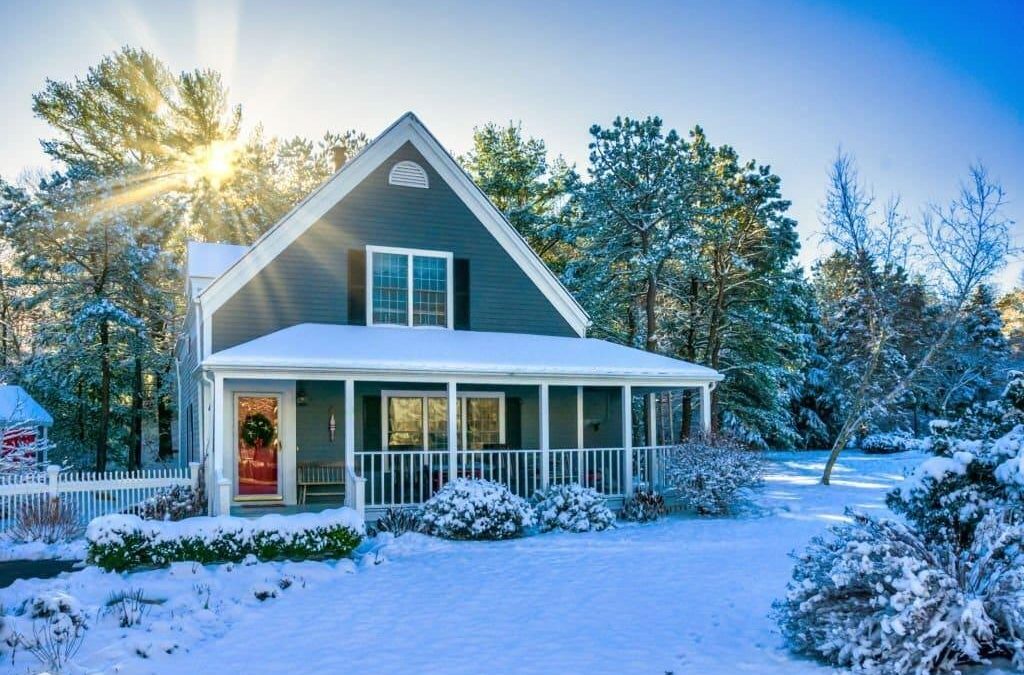
Winter can be a challenging time for your home’s plumbing system. From freezing temperatures to heavy snow and ice, there are numerous issues that can arise and cause damage to your pipes. Luckily, there is a simple solution to winterizing plumbing – the best way to protect your home from winter weather and keep it in great condition.
Whether you own a single-family home or a multi-unit property, winterizing plumbing is an essential part of preparing for the colder months. This involves checking and repairing any leaks or damage in your pipes, as well as insulating them to help prevent freezing. Other steps you can take include installing heat tape on exposed pipes and ensuring your water heater is properly insulated.
With the right winterizing strategies, you can rest easy knowing your plumbing system is well-protected from the harsh weather ahead. So, if you’re looking for a reliable solution to keep your home safe and comfortable this winter, winterize your plumbing.
Tips and Tricks for Winterizing Plumbing and Heating System
When winter rolls around, it’s important to take the time to prepare your plumbing and heating system for the colder months ahead. This involves carefully inspecting all of your pipes and fixtures, as well as making sure that your heating unit is functioning properly. To help you get started, here are a few tips and tricks for winterizing your pipes and heating system:
- Turn off the main water valve to your home, and drain all of your faucets and fixtures. This will help prevent any freezing or bursting that may occur due to extremely cold temperatures.
- Check for leaks and gaps around your pipes where heat can escape, and seal them up with insulation or other weatherproofing materials. This will help ensure that your plumbing system stays warm and dry throughout the winter months.
- Inspect your heating system to make sure that it is in good working order, and has any necessary maintenance or repairs performed by a HVAC professional. Maintaining a well-functioning heating unit will help keep your home warm and cozy during the colder months.
- Consider installing a programmable thermostat, which can help you better control the temperature in your home and save energy costs over time. And remember to keep an eye on weather forecasts, so that you can adjust the heat as needed to prevent any unexpected spikes or dips in temperature.
With these tips and tricks, you can perform winterize plumbing with confidence, keeping your home warm and cozy throughout the cold winter months.
The Benefits of Getting Ahead with Winterizing Plumbing
As the winter weather starts to set in, it’s important to take steps to winterize your plumbing and ensure that your home is properly prepared for the cold months ahead. This can include taking measures such as inspecting your pipes and fixtures for leaks or damage, insulating exposed pipes or valves, and checking any heating systems or water heaters to make sure they are fully functional and working properly.
There are many benefits to getting ahead with winterizing plumbing, including helping to prevent costly water damage, reducing the risk of frozen pipes, and ensuring that your home is comfortable and warm throughout the cold season. So, if you want to stay on top of things this winter and protect your home from potential issues, be sure to invest time and effort into winterizing your plumbing. With a little bit of planning and foresight, you can rest easy knowing that your home is well-prepared for whatever the season may bring!
The Best Strategies for Decluttering, Insulating, and Protecting Your Plumbing this Winter
Plumbing in Winters
When winter hits, it’s important to take steps to protect your plumbing from the cold and snowy weather. Whether you’re tackling a small renovation project or simply performing some simple maintenance tasks, there are several strategies that you can use to keep your pipes and fixtures in good working order all season long.
One of the most important things to do is to declutter your pipes and insulate them properly. This can be done by removing any unnecessary that may be blocking the flow of water, such as pots, pans, or other kitchen utensils. You should also consider adding insulation around your pipes to help keep them warm and prevent freezing during extremely cold weather.
Another key strategy for winterizing your plumbing is to take steps to protect it from harsh weather conditions. This can include sealing any cracks or gaps in your walls and roof, as well as installing covers over exterior faucets and vents to prevent damage from snow and ice buildup.
With these tips, you can keep your plumbing in great shape throughout the winter months, allowing you to stay comfortable and worry-free no matter what the weather has in store.
Conclusion
Winter can be a challenging time for your home’s plumbing system. Winterizing Plumbing is the best solution to protect your homes from Winter. Check for leaks and gaps around your pipes, and seal them up with insulation or other weatherproofing materials. Always consider HVAC specialists like Edwin Stipe HVAC & Plumbing while installing a plumbing or heating installation at your homes. This step can save energy costs over time. For free estimates visit the website or contact via phone number: 610-258-0201







